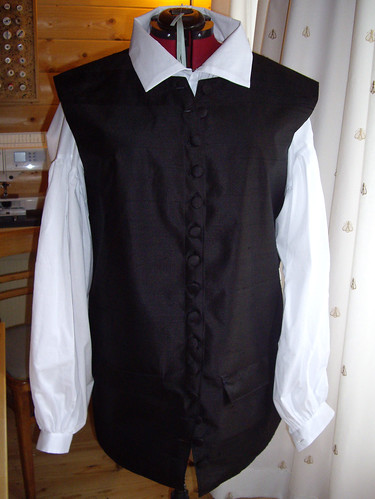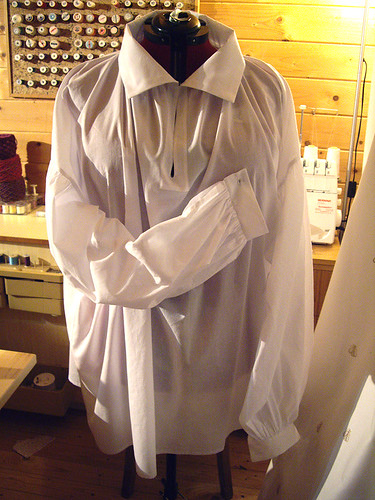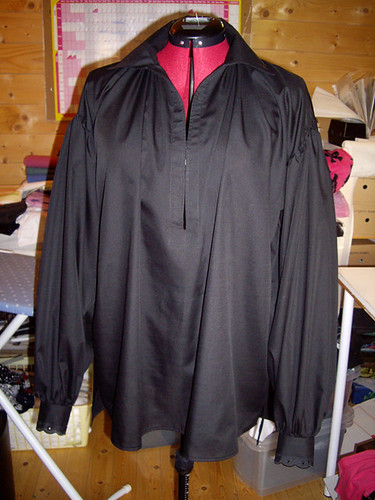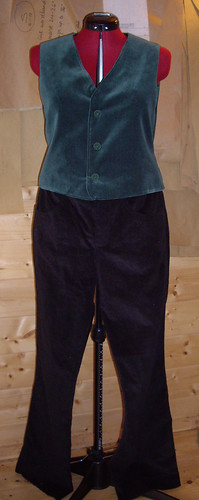I was invited to a 1920s Tea Dance, so of course I took the opportunity to make a 1920s dress!
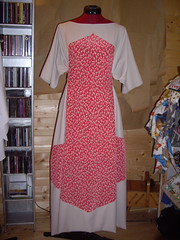

It’s Folkwear 261, the “Paris Promenade Dress”.
That’s front and back – you can tell the back by the tassels on the ends of the sash. (Look closely – they’re camouflaged, but they are there.)
Folkwear are apparently very accurate with their period sewing patterns, and this one assumed that you weren’t going to be using a sewing machine for anything but the long, straight seams. This meant that it was constructed in such a way that you couldn’t use a sewing machine for anything but the long, straight seams, and so I spent a Very Long Time doing a heck of a lot of hand sewing.
I’m very, very pleased with the work that’s gone into this dress. There was a lot of hand sewing, and the construction was like origami, but I’m (mostly) happy with the results.

I also made a last-minute hat which apparently made me look like some kind of demented floral sous-chef, which wasn’t quite the look I’d been going for. Pretend you didn’t see that, if you like. 😉
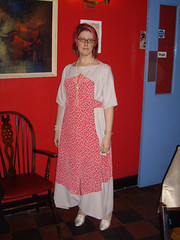
Here’s the dress, complete with bad hair moment after I’d decided that I couldn’t tolerate the stupid hat any longer.
That front apron part actually works as one truly ENORMOUS pocket, by the way. (Not all the way down to the point, there’s a seam about half way across the wide part, on the inside. That I sewed by hand. Aargh.)
That poofy bit at the hem is REALLY ANNOYING. Doesn’t do it on the dress form. Doesn’t do it on the coathanger. Doesn’t do it on the ironing board. Put the dress on? Poof. Grrrrr.
The hem is actually on a very deep fold of the fabric, so even though it’s been pressed into place, it’s draping differently because I’m not the same shape as my dress form. I think the best way to fix this is going to be to have someone else pin the hem into place while I’m wearing it, and then I can press the fold in the same place that it’s going to fall when the dress is being worn.
I have to say that the dress was absolutely FABULOUS to wear. I’m not usually a fan of synthetic fabrics, but the main body of the dress is a polyester crepe lightweight suiting, and it flows and drapes absolutely beautifully. Because the sash is also slippery (polyester georgette), you can lift your arms up very easily, and the dress just slides around. So floaty, so comfortable, and very glamorous-feeling.
Possibly also very comfortable because the narrowest part of the dress measures 68″ around, with the widest part clocking in at 84″. (That’s roughly twice as big as me.) I’d been a bit worried that all that fabric might make it look as though I’d gone to a party in a big beige sack, but thankfully that wasn’t the case at all!
I’m half considering making another one, perhaps in black. And without the silly hat.
Like this:
Like Loading...

